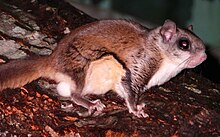SNAKES! Oh, the horror! The phobia a lot of people have about snakes probably goes back to the serpent in the Garden of Eden. They are not anything to fear. Despite what a lot of people think, snakes are not slimy, they are very dry to the touch.
I have been getting snake calls for a couple of weeks now, and there is really not a lot that can be done to get rid of them. There is really no way to "bait" or trap them. They can be removed by carefully picking up by the head, putting in a container, and relocating. Calling someone like us (unless it is in a basement) usually does no good,because by the time we get there the snake will be gone. If you have one in your yard, it's because you have the three things that all living things require-food, shelter, and water. They have probably been around for awhile, but being very secretive, you just never saw them. Snakes are totally harmless, even the venomous ones - the Copperhead and Timber rattlesnake here in CT. They will just lay still until the "threat" is past and will only bite if handled or feel they are cornered. You may have walked past one in the past and never even realized it. Snakes will not chase you, and they will not "attack" you. They just want to be left alone to go about their business. Snakes are extremely beneficial because they eat insects, small rodents, and other small critters. Snakes may occupy an abandoned rodent burrow, but cannot dig holes by themselves. Snakes have their place in nature like all other animals. Please, DO NOT KILL THEM! Below I have posted pictures of the most common snakes in CT, and a little bit about each.
I have shown the copperhead and milk snake side by side because the milk snake is most often mistaken for a copperhead.The copperhead is very uncommon and rarely seen. Note that on the copperhead the dark bands are much wider on the side than on the back, it's overall coppery color, and the head which is much wider than the body. The milk snake's bands are the same size all the way around. If it is seen, it's belly has a blue and white checkerboard pattern. It has a "V" or "Y" mark on the top of it's head, which is only slightly wider than it's body. Milk snakes occupy typical habitat around houses and will occasionally get into a basement.
The Garter snake (not "garden" or "gardener" snake) is arguably the most commonly seen snake in CT. It inhabits lawns, gardens, brush piles, stone walls, etc. Their pattern and coloring can vary greatly, but always consists of a dark gray to blackish color with thee light yellowish colored strips running the length of the body, They can be easily moved along by using a broom or something similar. They do no harm.
The Northern Water Snake is found around slow rivers, lakes, ponds, and swampy areas. It is fairly common and is NOT a Water moccasin(or Cottonmouth). They feed mostly on frogs and fish, but will take a occasional bird, bird egg or rodent. Water moccasins are a southern snake and their range only extends up to southern Virginia. While they can act aggressively, they are totally harmless, and will leave if given the opportunity.
The Ringneck snake likes woody, rocky habitat and are very commonly found in basements. They are grayish black on the back with a yellowish ring around the neck, and a yellowish colored belly. This is a smallish snake with a huge one being two feet long, but most are less than a foot long.
Snakes found in basements can be removed by putting something, like a wastebasket, over them and slowly pushing a piece of cardboard under the wastebasket and then taking it outside and releasing it.
These are probably the four most common species of snakes seen in CT(I am not including the Copperhead, because they are NOT common).
For info on the other 10 species native to CT, go to http://www.nfpestcont.com/Snakes.html
 | ||||||||||||||
| Milk Snake |
 |
| Copperhead |










